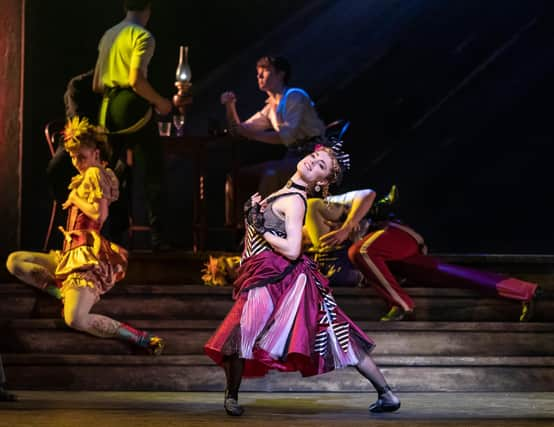Dance review: Scottish Ballet: The Scandal at Mayerling, Theatre Royal, Glasgow ****


Scottish Ballet: The Scandal at Mayerling, Theatre Royal, Glasgow ****
When Sir Kenneth MacMillan first created The Scandal at Mayerling in 1978 it was, to a certain extent, to right a wrong. The tragic deaths of 30-year-old Crown Prince Rudolf of Austria-Hungary and his 17-year-old lover, Mary Vetsera had been romanticised in films, and the choreographer wanted to explore a more honest approach.
Advertisement
Hide AdAdvertisement
Hide AdWell he certainly achieved that, and in this new version by Scottish Ballet the psychological heart of the piece beats even stronger. One of the most dramatic performances the company has ever given, The Scandal at Mayerling may look resplendent – satin gowns, smart uniforms, lavish ballrooms – but it’s a flimsy veneer for a troubled monarchy to hide behind.
In 1899, a time of political unrest in the Austro-Hungarian Empire, Rudolf’s murder/suicide pact may have been the subject of gossip and speculation but it involved real people with real problems. It’s this that MacMillan captures so well, exploring Rudolf’s relationship with his mother, wife, various lovers and Hungarian nationalists keen to draw him into the fold. Aside from a brothel scene filled with cavorting merry-makers, this is a tale of torment delivered with absolute commitment.
Choreographically, it takes no prisoners – if there was an interesting but difficult way to leap into somebody’s arms, MacMillan found it. Never is this more true than in the brutal yet stunning duet between Rudolf and his new wife, Stephanie on their wedding night. What also impresses, is the dancers’ capacity to convey strikingly different emotions – a mother unable to show affection, a wife terrified by her husband’s morbid fascinations, a teenager thrilled by her first experience of love, and the broken young man they all orbit.
The story may be over 130 years old, and the ballet over 40 years old, but its relevance remains and its choreographic genius still shines.
A message from the Editor:
Thank you for reading this article. We're more reliant on your support than ever as the shift in consumer habits brought about by coronavirus impacts our advertisers.
If you haven't already, please consider supporting our trusted, fact-checked journalism by taking out a digital subscription
Comments
Want to join the conversation? Please or to comment on this article.